Review by Matt C.
Mel Kishida deserves to be a household name. Even at a relatively young age, he’s made his mark as a character designer with the likes of the Atelier Arland trilogy and Hanasaku Iroha. Fantastic as those are, Kishida’s taken things to a new level with Blue Reflection. This is his debut as a supervisor/creative lead on a game, and it’s absolutely phenomenal—easily one of my favourite games not just of this year, but of this generation.
Blue Reflection is a story about depression. It’s a tale of grief, and of overcoming that with the support of irreplaceable friends. It’s a game about a group of teenage girls going through the trials and tribulations that teenage girls go through, and forming bonds that can’t be broken. It’s poignant, bittersweet, funny, heart-rending. It’s a beautiful game in every way possible.
Related reading: Matt S interviewed Blue Reflection producer Junzo Hosoi earlier this year, offering an insightful look at the ideas driving the game’s development.
At the centre of Blue Reflection is Hinako Shirai, a freshman at Hoshinomiya Girls High School. . Ballet is Hinako’s one passion in life, but a recent knee injury means she’ll never be able to dance again. Understandably, that’s ruined her life—”Without my ballet, I’m as good as dead”, she says early in the game—and she’s pretty much lost the will to live. On her first day at school she’s depressed and lethargic, a stark contrast to the lively, cheerful girls around her.
Then a strange incident sees her transported to a dreamlike fantasy world. Mysterious voices tell her to channel her wishes into a power, and by doing so she transforms into a sword-wielding, tutu-wearing magical girl. Most importantly, in this world her knee is in perfect shape, and she can dance. She can fight, too, which comes in handy when she gets attacked by strange demons.
Back in the real world, she soon meets the source of those mysterious voices: two of her classmates, twins by the name of Yuzu and Lime. As it turns out, the world is under threat from otherworldly demons called Sephirot, and the twins are “Reflectors”, magic-wielding heroes tasked with fending the Sephirot off. For reasons held close to their chests, they took an instant liking to Hinako and decided to make her a Reflector as well. For Hinako’s part, being a Reflector comes with not just the chance to dance freely in the dream world, but the promise of a wish once all the Sephirot are defeated. It’s the sliver of hope that she so desperately needs.
In order to defeat the Sephirot, Hinako, Yuzu, and Lime need to collect Fragments, which are intense feelings turned to crystal in that other dimension. The Common, as this plane is known, is a manifestation of the collective unconscious, and it allows Reflectors to explore and interact directly with people’s emotions. In the real world, emotions running high causes people to go “rampant”, shrouding them in a coloured aura and opening a path to the relevant zone of the Common. In the Common, the girls search for these Fragments, which offer a glimpse into the cause of the outburst and allow Hinako to find a way to calm the person in question in down. This stabilises the fragment, turning it into a gem that can be equipped to provide various combat benefits.
To put simply, it’s a fantastical, magical girl twist on empathy and friendship. The stresses of teenage life cause push the students of Hoshinomiya to the edge, and by peering into their hearts and understanding their plight, Hinako’s able to empathise and help. This forms bonds of friendship, which in turn serve as the power by which the three Reflectors are able to fend of the Sephirot.
This is a straightforward analogy, and it’s not unusual in games and anime (Persona has a long history of similar setups, for example), but it still sets up Blue Reflection perfectly for exploring the issues that it does. The pressure of Japanese high school is a major theme that comes up often, as do things like bullying, love, body image, and burgeoning sexuality. There’s one girl who’s fascinated with fashion and make-up and has to fight the stigma of being labelled a slut as a result, even though she no interest in boys and her obsession with beauty is purely for herself. There’s one girl who’s caught in the middle of her parents’ divorce and custody battle. There’s one girl who’s on the autism spectrum, and I think this is the first game I’ve seen that actually explores that as something more than a “character quirk”. And of course, there’s Hinako herself, with her ongoing battle with depression and her journey to understand that there’s more to life than ballet.
What’s remarkable about this is how authentic it all feels. I doubt Mel Kishida or any of the writing staff have any first-hand experience with being a teenage girl (and nor do I, I should point out), yet the writing is consistently raw, honest, and human. It’s a rare treat to play a game whose cast I empathise with so much, and Blue Reflection brought me to tears a few times.
There’s also an interesting twist on an idea of escaping to a fantasy world to get away from the pressures of life, which is an idea that pops up often in Japanese storytelling – Miyuki Miyabi’s Brave Story is a real classic in this ‘genre’ that has influenced many artists in the years since. There’s a definite element of escapism here, but instead of being a magical quick fix, the Common is just a way of processing and understanding what’s happening. The actual fix—talking through whatever the problem is, and stabilising the fragment as a result—happens in the real world, and that means confronting these problems head on. It’s a pointed commentary of the value of art itself as a means of escape; stories like these give us a break from the world and a way of understanding our emotions, but they’re not solutions to life’s problems so much as tools to help us find the answers.
Even with the themes it explores, Blue Reflection isn’t really a dark game; it’s more bittersweet than anything else. It’s often tragic, but it also puts a lot of focus on the joy of youth and of friendship. A lot of this comes through the dialogue in the optional interactions with Hinako’s friends, which build their relationship (both mechanically and narratively). You get to friendships blossoming in ways that are heartwarming, sweet, and funny—like Ako’s awkwardness at singing her rockstar dad’s songs at karaoke, or Yuri trying parfait for the first time. There’s also an in-game phone with a chat app, offering another window into the girls’ personalities and another source of comic relief.
In keeping with that bittersweet tone, Blue Reflection sports an art style that I can only describe as ethereal. The Common is a surreal, beautiful visualisation of different emotions, and it’s equal parts majestic and unsettling regardless of which zone you’re in. There’s a bright but limited colour palette built around blue and pink, feeding into this ethereality. By contrast, the real-world environments are as mundane as you’d expect them to be selling, helping to sell that slice-of-feeling, but soft lighting makes even these areas feel like they’re something out of a dream.
The whole game is gorgeous but character designs are where the art direction shines brightest—as you’d expect, given Kishida’s background. Even with their school uniforms, the different characters all have unique visual identities. They’re all very cute, but they still can’t hold a candle to Hinako, Yuzu, and Lime in Reflector form. They’re magical girls, and they look truly magical in a way that words can’t do justice.
The whole of Blue Reflection is a thing of beauty, and I don’t just mean that the girls themselves are attractive, though they certainly are. Everything is gorgeous, from the character and environment designs to the UI to the music, and even to things like the way abilities are named and characters animations in combat.
One thing that I’m sure will upset a lot of people is the “fanservice” element, and I put that word in quotes because it’s a stretch to call it that at all. Blue Reflection has a lot of bath scenes, a few shower scenes, a wet T-shirt shader for rainy scenes, and plenty of borderline voyeuristic camera angles. Despite all this, it never struck me as exploitative, or even comically lewd in the way that fanservice-heavy games often are. With the tone of the game and the humanity of its characters, these “fanservice” serve character building and empathy more than anything especially racy.
Take the (in)famous bath scenes, for example. For Hinako, the bath is a place where she feels safe and comfortable. It’s a place of respite from her knee pain and a place to be at peace, isolated in her own little serene bubble. You see this in the way she gently massages her knee, or ducks her head underwater, or idly hums. It’s a place where she’s naked, both literally and figuratively, but also completely safe and free to be herself.
Other “fanservice” scenes play a similar role: girls laughing and chatting in the showers after gym class shows their growing willingness to be open with one another; the rain shaders sell the vulnerability of a sudden downpour, literal or emotional, and create moments where the girls’ can be there for one another and support each other. I don’t for a moment believe that fanservice didn’t also factor into the decisions to include such scenes, but to write them off as pure titillation—as you just know that people are going to—would be to miss how much more is going on.
Though it’s a very typical JRPG in a lot of ways, Blue Reflection does some clever things to streamline and simplify the genre. Most significantly, there are no experience points—instead, you earn stat points after key story moments or certain sidequests, and spending these causes the character to level up. You don’t need to worry about how you spend stat points, because you can’t really “break” a character the way you can in more hardcore RPGs. Rather than increasing each stat individually, there are four broad groups: attack, defence, special, and technic. Each point you spend (and subsequent level up) increases all of a characters’ stats, but the choice of group gives relevant stats a bonus and lets you unlock skills.
Without an experience system, there’s little need to grind. Sometimes a sidequest will ask you to defeat a certain number of enemies, but the requirements are far from demanding. A simple crafting system encourages some farming of materials, but again, this is optional and it never takes very long to get what you need. If you’re only here for the story, you can skip every non-boss with little consequence; some might call this a failure, but appreciate that Blue Reflection gives us players the freedom to focus on what matters to them.
In the same vein, trips to the demon-filled Common rarely take more than 15 or 20 minutes unless you want them to, so it never feels like you’re forced to slog your way through arbitrary “gameplay” before you can move the story forward. If you want to you can, but it’s strictly optional. Again, I’m sure many will criticise the game for this, but as someone who loves JRPGs but has limited time to play them, I welcome Blue Reflection’s brevity.
The focus with this game is very much on the story it sets out to tell, and everything is committed to telling it as well as possible. Simple, non-intrusive gameplay lets the narrative run its course without the pacing issues that so often plague RPGs, and the gorgeous art direction perfectly sets the mood for an emotive, ethereal, magical experience. The story at the heart of it all is one of the most moving and heartfelt tales I’ve ever seen in a game, and that’s a huge achievement. The best part is that Mel Kishida is just getting started—if this is his directorial debut, I can’t wait to see what the future has in store.
– Matt C.
Contributor
Find me on Twitter: @MC_Odd


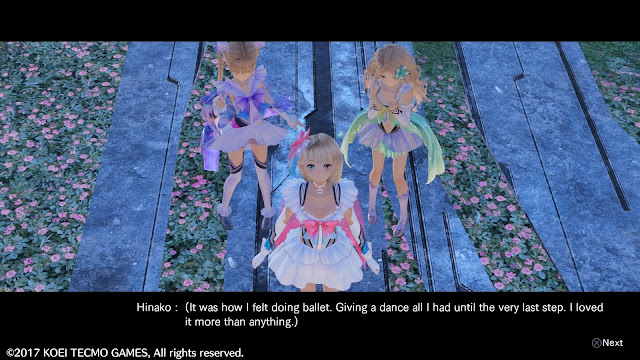
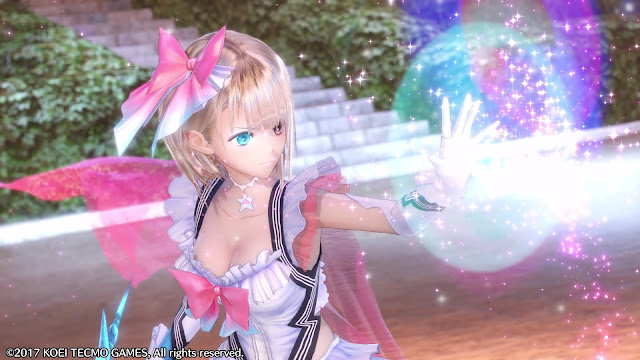
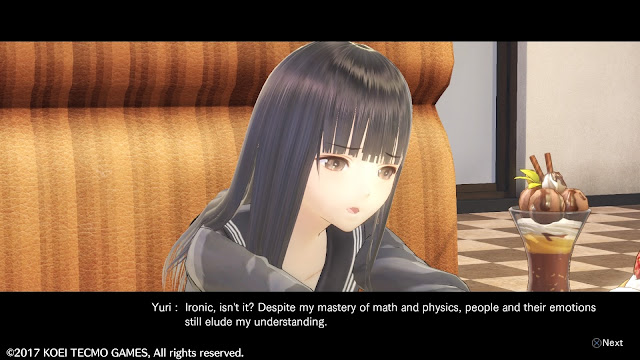

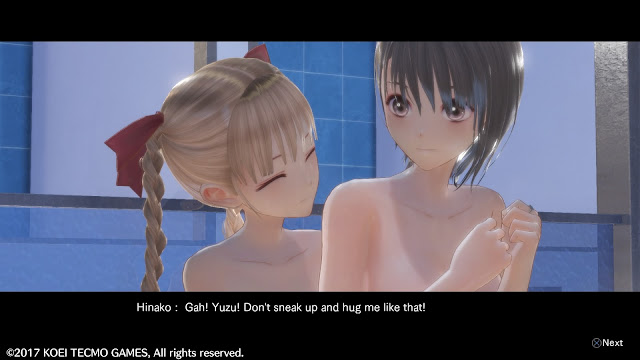




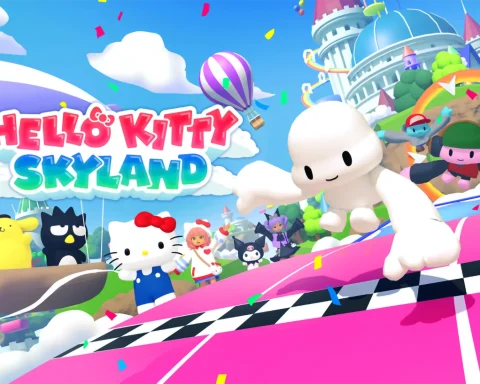



One thing I love about Blue Reflection is the atmosphere of the school. The lighting and sound captures the feeling of after school so beautifully. The fact that the various NPCs have their own little stories and issues they are working through throughout the game adds character to the school.
Simple as it might seem, bits of conversation about what to do after graduation or how to best study for tests add a layer of realism to the world.
One thing I think missed the mark was some of the hang out activities. I would have preferred there to be a few with more detail than the 10 in the game that all seem fairly copy and paste. The character episodes themselves were good, but the hang out activities themselves felt like an after thought in the writing. It also just takes too long to see them all.
The combat itself is excellent and involves more thinking than a generic turned based combat system to be efficient. Restoring hp and mp after fights means you can use all the powerful attacks at your disposal without fear of losing mana after the fight is over. It makes battles more relaxed.